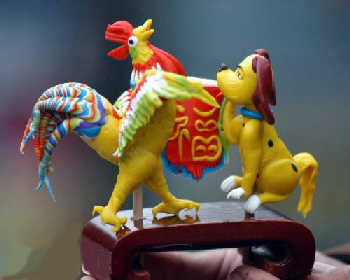
Sculpture with dough is a folk art known to few countries, if any outside China.
It is interesting to see how a few colored pieces of dough are turned in a matter of minutes into expressive and lively figurines by the trained hands of a folk artist, relying on no model. The figurines are generally about 8 centimeters (3 inches) tall, but recent innovations include figures as tall as 30 centimeters or tiny enough to be displayed in half a walnut shell.
Molding human figures and animals from clay or glutinous rice flour is a popular folk art in both urban and rural areas in China.
Written records on Chinesedough sculptures date back to theHan Dynasty(206BC-AD220). After several thousand years of inheritance and development,dough sculptures became a part of Chinese culture and folk arts, and also objects for study in history, archeology, folk arts, sculpture and aesthetics. In terms of style, dough sculptures in theYellow RiverValley are simple, crude, unconstrained and profound, while those in theYangtze RiverValley are delicate, exquisite and polished.
Materials and tools used in making dough sculptures mainly include white flour, scissors, a kitchen knife, comb, Chinese dates and Bunge prickly ash. With well-leavened dough, kneaded according to the set pattern, one can produce a vivid dough sculpture.
During the process, there are three tips for making the perfect dough sculpture. First, the honey, lard, powdered sugar and refined powder are made soluble by adding boiling water, then all is mixed in together with the flour. Edible pigments to form pastes of different colors are added during this stage. Second, the pastes are steamed for two to three minutes. Care is taken not to cook them for too long as they can become lusterless. Third, some oil is smeared on the dough sculptures with a brush to make them gleam and more vivid.
